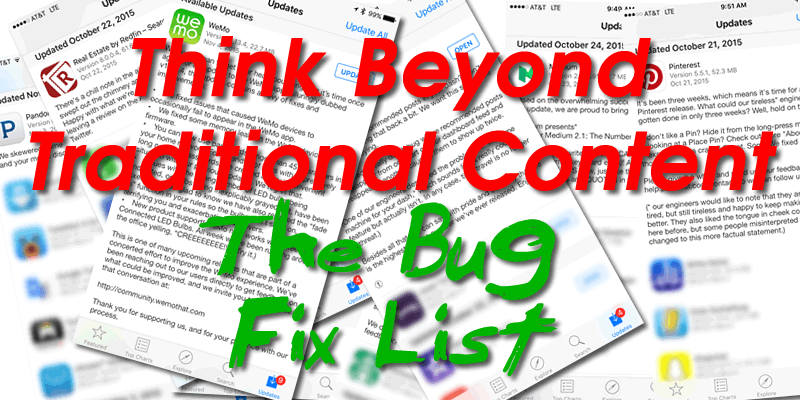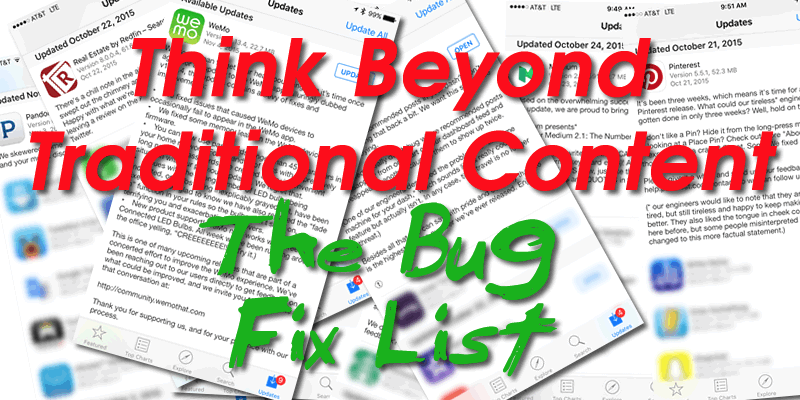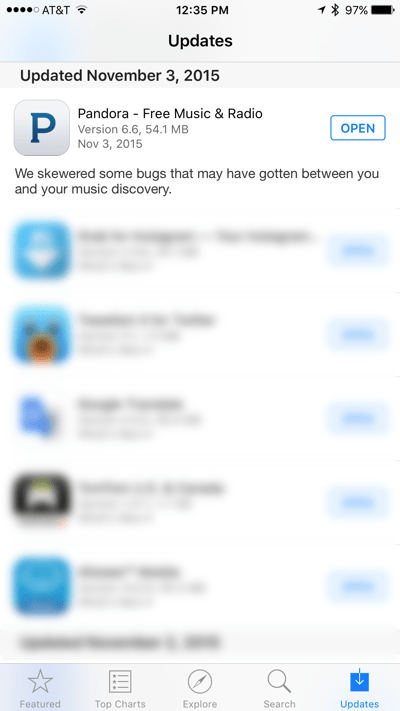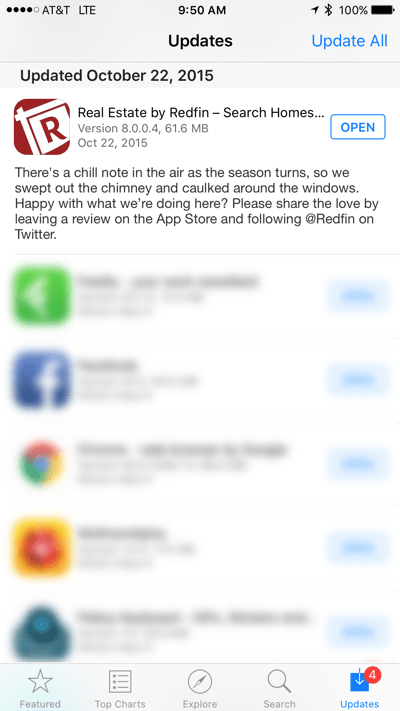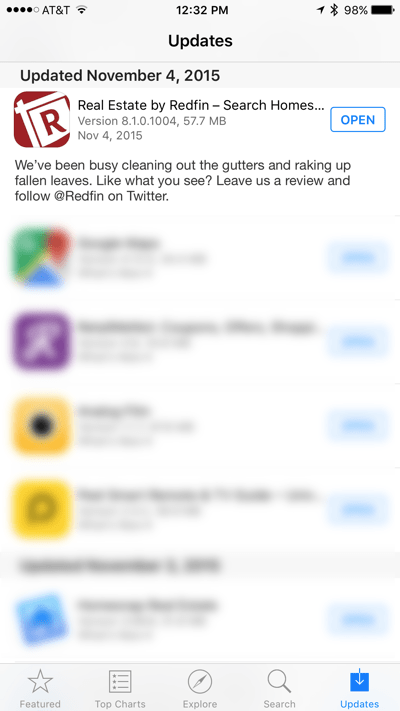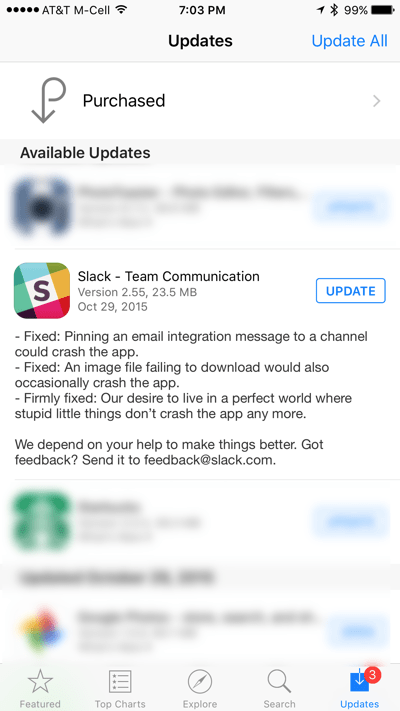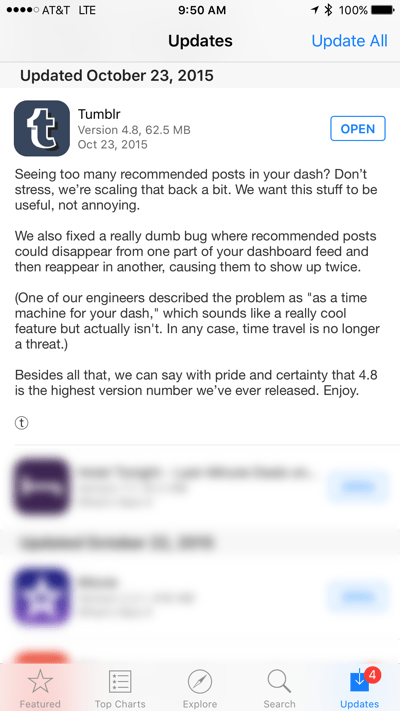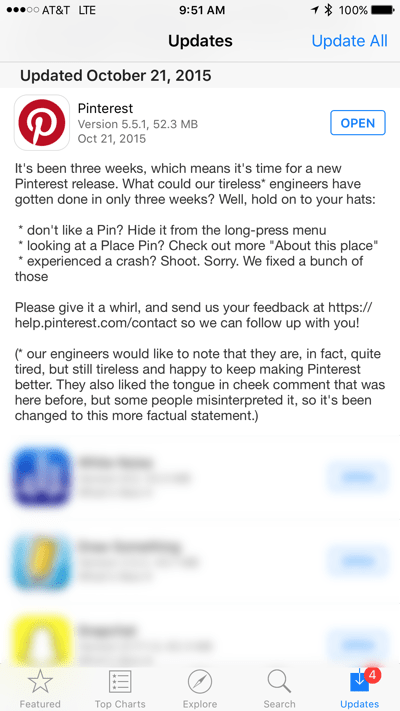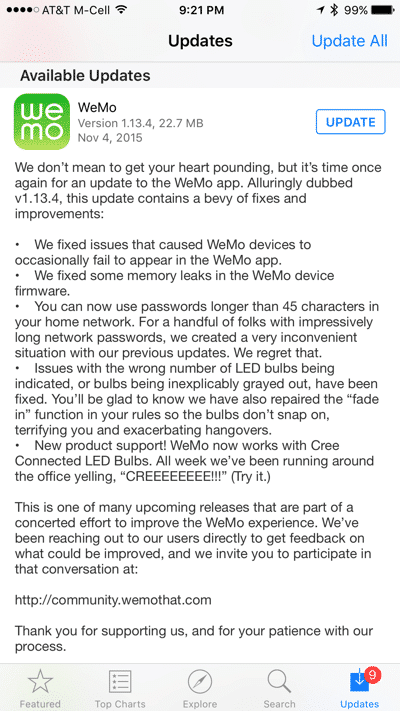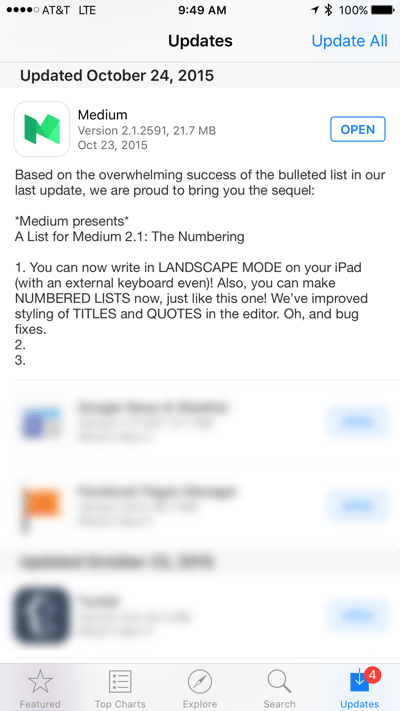Content producers should always be looking for other avenues to engage their audiences. While content strategists often say that engagement is one of the most important measurements of successful content, sometimes it is the intangible that can produce a favorable result. How, in fact, do you measure a smile or a laugh? Often a positive feeling is not measured immediately. But the elicitation of a positive emotion from written content can actually do wonders for your brand, product or service. And sometimes, you must look beyond traditional content to get these reactions.
One example of this non-traditional content is right under your fingers. If you have a smartphone and regularly download applications, you are already engaging in that content. No, I’m not talking about the apps themselves, those are the product or service which is shared and marketed regularly already (hopefully). What I would rather focus your attention on is the fact that these apps are buggy and often need to be updated. Therein lies a non-traditional content source that often goes overlooked. If you or your developers produce perfect code, then this content source is probably not for you. However, to err is human so bugs exist, and your users must be notified. And these notifications are content. This content must be living and updated frequently to keep the attention of your audience or customers. If you create a blog, you must regularly feed it content in order for it to be effective. If you launch an application, you must regularly fix bugs and release new features to ensure that your users remain happy.
I’m not going to dive into how you should develop and release your smartphone apps. I am, however, going to make a small recommendation around the content your produce when you DO release an update or bug fix. Unfortunately, many users simply install app updates without looking at what had been changed, fixed, updated or added to the apps. (Or, there are plenty of people who simply ignore updates until they really must upgrade them.) But there are those of us, myself included, who actually take time to look at the few lines of content added to the app update, specifically, the bug fix list.
If you look at a majority of bug fix lists, they are pretty dry and boring. “We fixed bug #1. We fixed bug #2. Please like us in the App store.” Stuff like that. For the most part, users just skim over this without paying too much attention to what is written. But there are a few developers or product managers or marketing manager or content managers who actually understand that the bug fix list is an area to do more. There isn’t really much of a call to action (CTA) other than to download the update. Some app owners may announce sales or ask for reviews. But there is more that you can do, and be fun in the process.
I want to circle back to eliciting a positive emotion from content. I have compiled a few bug fix lists from apps that I have on my iPhone that recently made me smile. And while these types of humorous updates are not very frequent, most are dry and matter of fact, they do stand out when you come across them. It does depend on the “personality” of the company who owns the app. Some app updates may not be suitable for having a humorous bug fix entry. Honestly, though, if you can put the personality of your brand into the update list – and it doesn’t have to be humorous – you are doing content marketing properly in my opinion.
I have selected a few bug list that I recently came across that I found to be particularly eye-catching from their sense of humor. These are not endorsements for any of these apps. They are just examples of the person or people in charge of the bug fix list having a sense of humor. All of these are from the Apple app store, but this type of content strategy could be applied to any software marketplace.
Let’s start with the most basic. Pandora recently fixed some bugs. Their update not only “graphically” illustrates this, but also ties it back to the solution they provide, music discovery.
Real Estate by Redfin app, which helps find homes to buy, folds in seasonality and home improvement and maintenance content with their bug fix listings.
Popular “team communications” app and service, Slack, recently listed out a couple of bug fixes but then re-iterated their commitment to produce a (relatively) bug-free environment.
Microblogging/blogging platform, Tumblr, dispelled the threat of a buggy “time travel” while humbly stating that they had achieved the highest version number WITHOUT traveling through time.
Photo pinning and sharing service, Pinterest, humorously conveyed that their engineers are, in reality, human and even played on their own previous humorous bug list comments.
WeMo does home automation though a series of hardware and software integrations and supports a wide range of connected devices in the home. They recently added a new product integration called Cree and they had some fun with that.
I saved the one that made me actually laugh for last. Medium, a “different kind of place to read and write on the Internet,” recently introduced a new feature: the numbered list. Their app update tells it all in quite a funny way, I felt.
These are just a few examples of how that non-traditional content of bug fix list updates can actually serve to further engage audiences. There is, as of yet, no easy way to share or like updates (who knows, perhaps that will come over time), but there are users out there who DO consume this subtle content.
My recommendation, if the brand or marketing team lets you, start to develop you company persona on these bug fix lists. Dare to break away from the traditional “we fixed this bug and made the product more stable.” If you are updating the smartphone app, it’s should be pretty obvious that there is a reason why you are doing it. You can still state what you fixed or updated or added, but you also have the opportunity to do much more for your brand, product or service by adding a bit of personality to these updates. They are, after all, snippets of content that some members of your audience is exposed to.
HTD says: Remember, content is everywhere. Figure out how to use all of it. And dare to make your customers smile!
